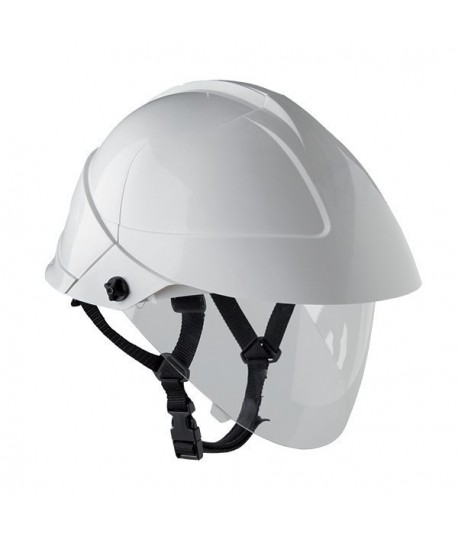ELECTRIC INSULATING HELMET w. face shield, low voltage 1000V
Valid Article
ELECTRIC INSULATING HELMET w. face shield, low voltage 1000V
Form
Helmet with integrated retractable face shield approved for the protection of electric arcs and short circuits.
Hull: resistance of the hull to mechanical impacts and allows the head to be isolated from an electrical contact up to 1000 V AC.
- Head circumference adjustment by knob
- Adjusting the height position
- Anti-arc polycarbonate panoramic face shield with anti-scratch and anti-fog treatment
- Chinstrap (clip closure and velcro strap)
Face shield: face protection, resistant to the impact of molten metal, the energy and heat of an electric arc.
- IEC 61482-1-2 class 1 (4 kA-500 ms distance 300 mm-Energy 3.48 cal/com²)
- GS-ET 29
- EN 166 / 170 step number 2-1.2. (UV protection)
- Level 2 optical class
- Mechanical resistance level B
- Protection against short-circuit arcing: 8
- Anti-scratch and anti-fog polycarbonate panoramic screen
- Fully retractable screen inside the helmet
Fit
-
Function
Electrically insulating helmets with face shield for use in low voltage installations.
The electrically insulating helmets protects the wearer against the risk of electrification by direct electrical contact during work on or near live parts of electrical installations: they prevent the passage of a current through the user entering the head.
They offer protection against shocks and falling objects.
They are used in works on or in proximity to parts in tension in installations of up to 1000 V in alternating current or 1500 V in direct current.

